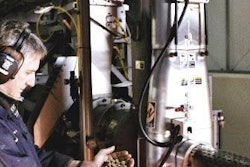"Trends in the petfood market don't just follow human food trends, they often do so at accelerated rates," says David Lummis, senior pet market analyst for Packaged Facts, in his article "Selling safety". As consumers increasingly humanize their pets, they're looking for products to help them feed their furry charges similarly to how they feed themselves.
At the end of July I attended FoodSmarts, the 2007 annual meeting of the Institute of Food Technologists ( www.ift.org ). This is one of the key events in the US for the human food industry; this year's edition attracted more than 23,000 attendees and exhibits from more than 1,000 companies.
Many of those companies have divisions operating in the petfood industry, and those that don't easily could, because their products and services could readily be adapted to petfood. Think functional ingredients, nutraceuticals, innovative packaging and testing solutions, to name a few.
Eerie similarities
In the same vein, the FoodSmarts conference followed right along the story lines coming out of our industry:
- David Acheson, assistant commissioner for food protection at the US Food and Drug Administration, talking about food safety;
- A panel of experts discussing ingredient safety in a global market;
- Recalls giving a boost to organic foods;
- The growing role of sustainability in manufacturing and business.
With the global ingredient safety discussion in particular, "petfood" could have easily been substituted whenever the word "food" was used, and it would have sounded eerily similar to the panel discussion on traceability during Petfood Forum 2007 in April or our July webinar on petfood safety .
Take these excerpts from the Food-Smarts discussion on the IFT website:
"Though driven by recent problems with Chinese ingredients, this is not a problem with China alone but stems from working in an increasingly complex global environment."
"Global sourcing is a must; consumers know no seasonality, making sourcing ingredients from all over the world a necessity."
"With the opportunity of great growth in certain markets comes great risk, and the challenge is managing that risk. More attention should be paid to the supplier relationship, including the technical, cultural and language aspects."
"Many consumers wonder why more inspections won't simply solve the problem. But, you can't inspect everything; limited resources mitigate against this. If everything goes to a lab, nothing ends up on a plate."
"What has been learned from the outbreaks? To dig deeper into the supply chain. It is no longer enough for companies to go back to just one source, they may need to go back to the source's source. Industry cannot be complacent and simply trust their suppliers to do the necessary quality assurance. Companies are ultimately responsible for the safety of their products."
There's an "opportunity for trade association and select supplier programs to enhance supplier credibility and education."
Common cause
It seems our industry may be catching up to and converging with the human food industry faster than anyone has expected. After all, the two markets share a common cause forged by contamination crises and negative PR: There's a prevailing desire among professionals in both industries to make safe, healthy products. Perhaps, working together, we can achieve that goal.


















